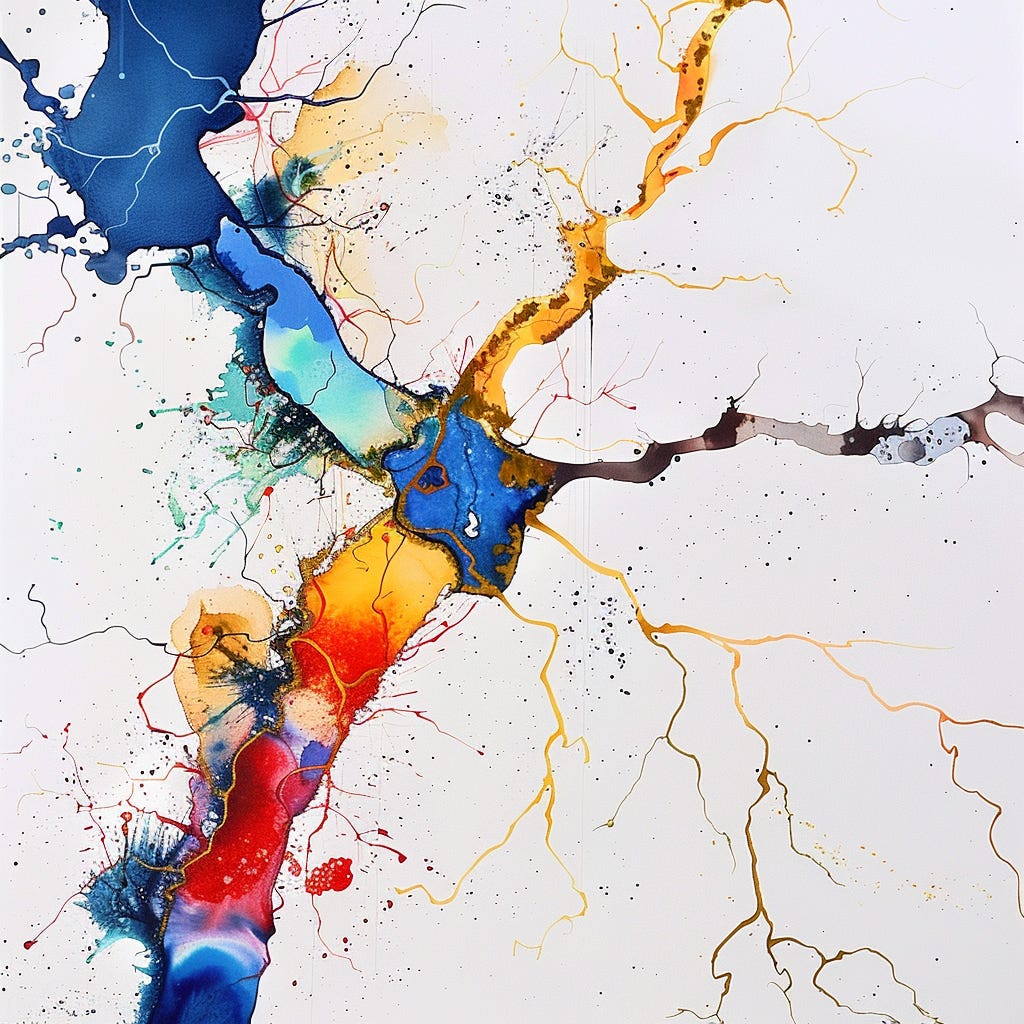Two thoughts before today’s article.
There is a disadvantage in trying to write 500 words everyday : it is hard to delve deep into ideas all while keeping the rest of my life afloat. I can only scratch the surface of things and could either keep digging the next day (which for now I assume would be a bore to my small base of readers) or move on hoping the compounding effect will eventually connect my musings into more substantial articles in the future. And choosing to write full-time is not an option right now.
Experiencing this frustration that early in my commitment to writing more often (without obsessing over quality) is actually a good sign. It shows I am already being drawn toward crafting deeper, more intriguing content. While today’s article is more a mess than anything else, I take this as a positive sign for the future of my writing.
Anyway, let’s move on.
Embracing Imperfections
Martha and I are close to a lot of artisans and craftsmen. This is not an accident, as learning how to make things by ourselves has been an obsession of ours from the day we met and a core rule of the philosophy of life we have built together.
Among these friends are pottery makers, and what they tell us I find fascinating.
Handmade products are never perfect, and each piece is inherently unique, bearing the mark of its maker through many subtle details. But the craftsman always aims at « perfection » through applying effort and technique, which inevitably results in nearly flawless works that reflect their skill.
But now their customers are insisting more and more for their products to show clear and noticeable imperfections.
Historical thought experiment
Let’s go back a few hundred years and pretend you start pottery making.
At level one, you would completely suck. Your work would not only be imperfect, it would be totally useless.
After a year under your mentor’s teaching , you would probably manage to produce bowls, mugs, plates, vases and various other basic shapes, and sell them in your shop on main-street.
Now if you kept working on your craft for a few more years you could become a master. You would get noticed by nobles and riches. They would commission your work and make you famous, bringing other patrons to your thriving business. For them, owning unique handmade items would be a sign of their social, financial status and power.
Now comes the industrial revolution and you have to compete with machines and unskilled labor producing perfect, identical, high-quality products easy and cheap. You go from rockstar to rare breed as media promotion and globalization accelerate this shift.
Going back a notch
People today seem to grow progressively tired of the « perfection » of mass-production, and yearn for more handmade items. The market has responded, and now tries to mass-produce handmade looking products. The loop just goes on again.
Thus people are now asking craftsmen to include deliberate imperfections to make sure there is no doubt they bought handmade items.
It is easy - and probably right - to draw the conclusion that this is all yet again a question of status and power, ego survival, identity signaling and setting oneself apart from « the herd», but for once I’d like to be a little more optimistic.
A Japanese Parallel
Consider the concepts of Kintsugi and Wabi-Sabi in Japan.
Kintsugi is a Japanese art consisting in fixing broken pottery with golden inlays to magnify the imperfections and highlight the history of the object.
Wabi-sabi is a Japanese aesthetic concept that finds beauty in imperfection, transience, and the natural cycle of growth and decay. It recognizes that nothing lasts forever nor is ever finished. The best training ground to develop an appreciation for this concept is observing nature.
And this is where the craving for imperfections and handmade products offers hope for the future.
Back to what really matters
People are more and more disconnected to what is essential in life. I’ll save you the hiatus on technology, dopamine, junk food, procrastination and another hundred stuffs, as we’ll have other opportunities to talk about these at length.
But this craving for imperfections in handmade stuffs does show a need to get back closer to nature and what inherently makes us human, in all our “perfect imperfection”. Most people spend their whole life idolizing the superficial world of products and miss the beauty that is right under their nose.
This ongoing trend is likely to spread over to other invasive and toxic parts of our lives.
Look at YouTube for example: videos are becoming increasingly frenetic, full of quick cuts and sound effects, vying for the “perfect” recipe to keep people hooked as long as possible, as people’s attention span supposedly shrinks.
And now we have artificial intelligence which promise to invade our lives - for better and worse. I can guarantee you it will soon be able to produce video content 100% tailored for you based on all the juicy details you’ve been feeding the algorithms over the last twenty years.
So I am sure people will soon crave raw unedited videos made by real people again.
It’s already 2:30am and I wish I had time to find other parallels. I can’t help but be excited at the idea of playing with this in other parts of our lives and see where it leads.



I have a good simple saying for this:
Perfect isn’t interesting.